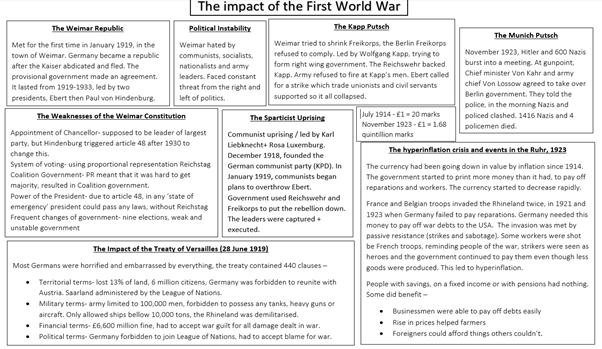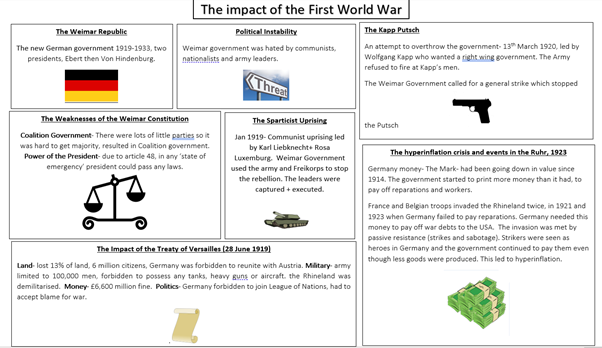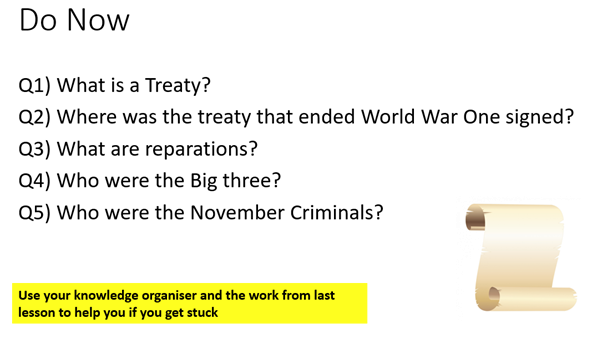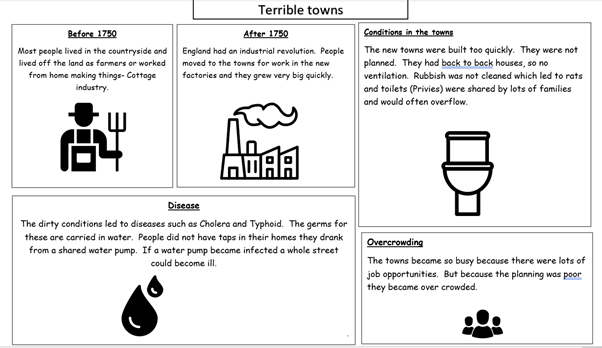December Blog 2021
This month the guest editor is Vicci Masson, who has written our teaching and learning blog on the advantages of using dual coding to support all students, but in particular our SEN students. I know the Humanities departments have been trialling this and have found it extremely useful, and the student feedback has also been very positive. Vicci has focussed this blog on supporting revision, as we are now in the run-up to the summer exams, I think this is good timing for us to consider how we can use this to support our students. Over to you Vicci…
In History this year we have had a bit of a revelation. While we want to stretch and challenge all our students, so they can make the greatest progress we don’t want to hamper our athletes before they have even started the race by giving them tools that will not help them get to their end goal. With a very high percentage of our Year 11 students with SEN support this year, this is a very important time for us to review our practice and improve our provision for revision.
Knowledge organisers
Our existing knowledge organisers were content heavy and while they would support our level 7-9 students and challenge our level 5-6 students, they would not be helpful for our students in the low attaining band. Those with a target grade of a 4 or below would struggle with the level of literacy (example below)

Having attended an Eduqas webinar in October that focused on a school in a similar setting to Crookhorn, I was interested to see how they used knowledge organisers differently.

They advised designing knowledge organisers following the principles of dual coding. These were not to then be filed away or sent home with students to never again see the light of day! Each knowledge organiser was handed out at the start of the topic and stuck into the student book. The images used in the knowledge organiser were then used in every ‘Do Now’ activity, so that students became used to using them as an information source.


Research by Mayer and Anderson in 1991 found that when verbal information was presented alongside relevant images, it became much more memorable. Therefore, having the images shown on the board or in the student’s book while they complete a piece of work mean that the cognitive load facing the student is reduced, allowing them to more easily complete the task in hand.
If our brains work best when information comes in more than one format, then the repeated use of these simplistic images over a series of lessons should aid working memory and ultimately lead to greater progress being made.
We have used these in our revision programme and already this year there has been a pleasing response from year 11. Students are using the resources in a meaningful way. The use of a visual representation gives them something to hook their learning to but more so, the over learning and repetition of using the knowledge organiser each lesson has afforded students a new-found confidence to respond to targeted questioning and cold calling.
This is a tactic that we plan to cascade down to KS3. Not only will this prepare our students to work similarly at GCSE, it would seem foolish to not use current research in our pedagogy for KS3 as well as KS4. In year 8 will be trialling the use of knowledge organisers that use black and white images from the noun project.
This website is a useful resource that is a one-stop shop for simplistic black and white images.
Please find below another example that we have recently used.

